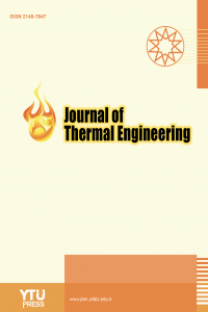Field-synergy and nanoparticle’s diameter analysis on circular jet impingement using three oxide–water-based nanofluids
Field-synergy and nanoparticle’s diameter analysis on circular jet impingement using three oxide–water-based nanofluids
Field Synergy, Nanoparticle Diameter, Nanoparticle Concentration, Al2O3, TiO2 and CuO Circular Jet Impingement, Heat Transfer,
- Yayın Aralığı: 6
- Başlangıç: 2015
- Yayıncı: YILDIZ TEKNİK ÜNİVERSİTESİ
Heat transfer performance of nanofluids in heat exchanger: a review
Rohinee BARAI, Devesh KUMAR, Atul WANKHADE
Meryem TERHAN, Sena Saliha ABAK
Komal MADAN, Omendra Kumar SINGH
Subhash LAHANE, Prashant DESHMUKH, Manoj NARGADE
Control of noise and temperature using radial air injection inside engine silencer
Nilaj DESHMUKH, Abhijit WAGHMODE
Review on latent thermal energy storage using phase change material
Sattar ALJABAIR, Israa ALESBE, Sahira Hasan IBRAHIM
Performance improvement of shell and tube heat exchanger by using Fe3O4/water nanofluid
Saad NAJIM, Adnan HUSSEIN, Suad Hassan DANOOK
Buoyancy force and magnetic field effects on laminar vortex breakdown and fluid layers
